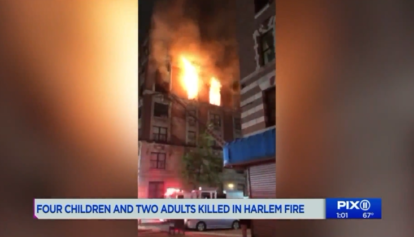
No, Harlem is not like it was 20 years ago or even 10 years ago—and it’s certainly not like it was 67 years ago, when Carver was founded as the nation’s largest African-American-owned bank.
The financial crisis of seven years ago came through like a bulldozer, ripping up family savings, disproportionately in predominantly Black communities like Harlem.
On the strength of a dramatic bailout in 2011, Carver continues to breathe, but not as freely, with Bank of America, Chase, Citibank and Wells Fargo all with branches uptown.
In an attempt to resuscitate Carver, new chief executive Michael Pugh has taken a community approach, soliciting local churches and nonprofit organizations to help the bank link with potential clients, according to Crain’s New York Business.
Under Pugh, Carver is sponsoring neighborhood events like Summer Sizzles on Lenox, which highlights the street’s restaurants and makes a direct connection to the businesses. Additionally, Carver recently made a $1.3 million loan to Gotham Greens, a Brooklyn-based producer of pesticide-free vegetables.
“That’s an example of us doing business with people and in places where we weren’t before,” Pugh said to Crain’s.
He plans to offer business loans of $10,000 or less—a tactic that could make life easier for some small businesses.
“If a person who’s running a kiosk on 125th Street came looking for a loan, another bank might offer him a credit card—or nothing,” he said. “We’re going to provide something better.”
Carver, the last Black-owned bank in New York, is not alone among African-American-founded banks that have to be creative to survive. Once, there were 91 Black banks. Since 1987, three-quarters of them have folded, including Atlanta’s Capitol City Bank & Trust, which recently closed its doors. Chicago’s Highland Community Bank shut down in January.
The collapse of so many African-American banks has alarmed Black leaders, including those inside the Obama administration, who are only now taking measures to save the 24 that remain in the United States. Their position is that the banks need to be preserved to help ignite the careers of young African-Americans and provide credit to consumers and entrepreneurs who couldn’t get it anywhere else.
When the housing market collapsed and the financial crisis erupted, Carver lost more than $60 million between 2011 and 2012—frightening considering the bank had generated only about $20 million in net earnings since going public in 1994.
In 2011, according to Crain’s, regulators demanded that Carver raise cash fast and purge its books of troubled loans or the bank would be seized. CEO Debbie Wright staved off disaster, but it was a costly move: The federal government agreed to rescue the bank, and Goldman Sachs, Morgan Stanley, Prudential Financial, Citigroup and others injected $55 million in cash. But existing Carver shareholders, many of them Harlem residents who for decades had turned to the bank for mortgages or savings accounts, were left with just a 2 percent stake. The nation’s largest African-American-run bank was no longer African-American-owned.
“There was no alternative,” Wright said at the time. “The … capital we needed wasn’t available locally.”
At least Carver, in some form, survived. Many other African-American banks could not raise the money. The others struggle. Carver’s future is promising, however. The lifeline from the city’s biggest banks allows the opportunity to methodically rebuild the institution, one loan at a time.


